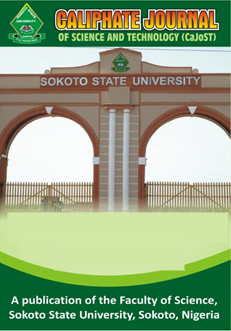The Evaluation of the Antiplasmodial Activity of the Aqueous and n-hexane fractions of Citrullus lanatus leaf in Plasmodium berghei beghei infected Mice.
DOI:
https://doi.org/10.4314/aq39fn49Abstract
The high morbidity and mortality rates due to malaria infection annually around the globe continues to be of great concern, especially in endemic areas where children and women are mostly affected. Resistance of Plasmodium to many existing antimalarials including the declining effectiveness of the current ACTs has called for intensified effort in the search for a lasting solution to malaria. This study evaluated the in vivo antiplasmodial activities of the aqueous and n-hexane fractions of Citrullus lanatus leaf extract in mice infected with Plasmodium berghei beghei. The Median lethal dose (LD50) of the aqueous extract and the n-hexane fraction was determined according to Lorke’s method while the Antiplasmodial activity was investigated using standard methods described by Peter’s 4-day suppressive test (Chemosuppression), Ryley and Peter’s method 1970 (Prophylaxis) and Ryley et al., 1991 (curative or Rane test). The test groups were administered per oral, graded doses of the different fractions of the extracts according to body weights of the mice. Chloroquine 5 mg/kg body weight and Pyrimethamine 1.2 mg/kg were used as positive controls while normal saline (0.2 mL) was administered as negative control accordingly. Preliminary phytochemical screening revealed the presence of alkaloids, saponin, flavonoids, tannins, phytosterols, reducing sugars and phenolic compounds. The antimalarial activity of both fractions showed a significant (p<0.05) dose-dependent reduction in parasitemia levels when compared to the negative control, the aqueous fraction at the highest dose of 200 mg/kg body weight gave the highest chemo suppression 90.95% comparable to the standard chloroquine 94.65% and the n-hexane fraction similarly showed the highest suppressive activity at the highest dose 74.07% (p<0.05) against the standard chloroquine. The prophylactic effect of the n-hexane fraction was significant (p<0.05) at all doses with the highest effect at the highest dose of 200 mg/kg while the aqueous fraction showed significant (p<0.002) schizonticidal effect at all the doses; 50, 100 and 200 mg/kg on day 7 as 34.70±4.60, 29.01±4.18 and 23.80±28 respectively. This result has shown that the leaf of Citrullus lanatus demonstrated a significant antiplasmodial activity and is safe for the ethnomedicinal management of malaria.

